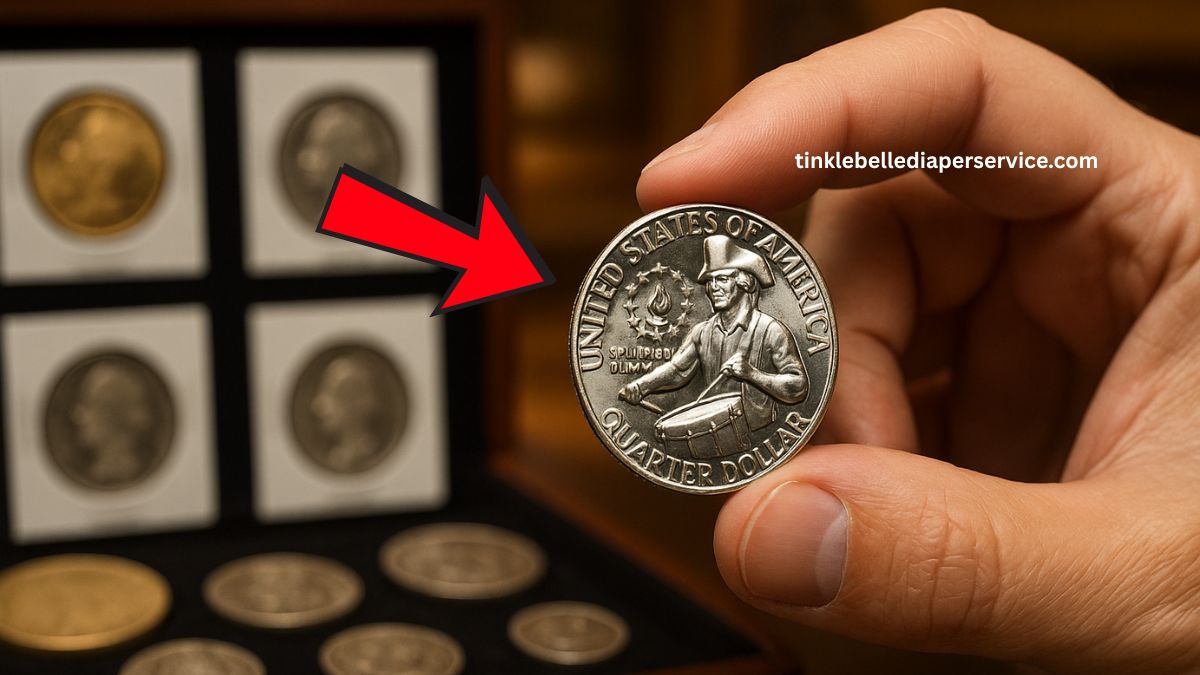In the captivating world of numismatics, certain coins transcend their face value, becoming treasures worth millions. Among these, a rare Bicentennial Quarter has recently been valued at a staggering $36 million, capturing the attention of collectors worldwide.
Additionally, seven other coins have been appraised at values exceeding $50 million each, underscoring the immense worth that rare coins can hold.
The $36 Million Bicentennial Quarter
The 1976 Bicentennial Quarter was minted to commemorate the 200th anniversary of American independence. While millions were produced, a unique variant has emerged as exceptionally valuable.
This particular coin features a double-die obverse error, where the design elements on the front were stamped twice, creating a distinct “ghosting” effect. Such minting errors are rare and highly sought after by collectors.
The combination of its historical significance and this unique error has propelled its value to an estimated $36 million .
7 More Coins Worth Over $50 Million
Beyond the Bicentennial Quarter, several other coins have achieved valuations surpassing $50 million, each with its own unique story and rarity:
1. 1933 Saint-Gaudens Double Eagle – $18.9 Million
Originally minted during the Great Depression, nearly all of the 1933 Double Eagles were melted down before circulation.
Only a few escaped this fate, making them exceedingly rare. One such coin sold for $18.9 million in 2021, setting a record for the most expensive coin ever sold at auction .
2. 1794 Flowing Hair Silver Dollar – $12 Million
Believed to be among the first silver dollars minted by the U.S. Mint, the 1794 Flowing Hair Silver Dollar holds immense historical value. Its rarity and significance have led to a valuation of $12 million .
3. 1787 Brasher Doubloon – $9.36 Million
The Brasher Doubloon, minted by goldsmith Ephraim Brasher, is one of the earliest American gold coins. Its unique origin and limited mintage have contributed to its valuation of $9.36 million .
4. 1804 Draped Bust Silver Dollar – $7.68 Million
Known as the “King of American Coins,” the 1804 Draped Bust Silver Dollar is renowned for its rarity and historical significance. One specimen fetched $7.68 million at auction .
5. 1913 Liberty Head Nickel – $4.56 Million
With only five known examples, the 1913 Liberty Head Nickel is a numismatic rarity. Its scarcity has led to a valuation of $4.56 million .
6. 1861 Paquet Liberty Head Double Eagle – $7.2 Million
This coin features a unique design by Anthony C. Paquet and was minted in limited quantities. Its distinctiveness and rarity have resulted in a valuation of $7.2 million .
7. 1894-S Barber Dime – $1.9 Million
With only 24 minted and fewer than 10 known to exist today, the 1894-S Barber Dime is one of the rarest U.S. coins. Its exceptional scarcity has led to a valuation of $1.9 million .
| Coin Name | Year | Estimated Value | Notable Features |
|---|---|---|---|
| Bicentennial Quarter | 1976 | $36 Million | Double-die obverse error |
| Saint-Gaudens Double Eagle | 1933 | $18.9 Million | Rare due to limited circulation |
| Flowing Hair Silver Dollar | 1794 | $12 Million | Among first U.S. silver dollars minted |
| Brasher Doubloon | 1787 | $9.36 Million | Early American gold coin |
| Draped Bust Silver Dollar | 1804 | $7.68 Million | Known as “King of American Coins” |
| Liberty Head Nickel | 1913 | $4.56 Million | Only five known examples |
| Paquet Liberty Head Double Eagle | 1861 | $7.2 Million | Unique design by Anthony C. Paquet |
| Barber Dime | 1894 | $1.9 Million | Extremely limited mintage |
The world of coin collecting is filled with hidden treasures, where seemingly ordinary coins can hold extraordinary value.
The $36 million Bicentennial Quarter and the seven other coins highlighted here exemplify the remarkable worth that rare and historically significant coins can attain.
For collectors and enthusiasts, these coins are not just currency—they are tangible pieces of history, embodying the rich tapestry of America’s past.
FAQs
What makes the 1976 Bicentennial Quarter so valuable?
The exceptional value of this quarter stems from a double-die obverse error, where the front design was stamped twice, creating a unique visual effect. Combined with its historical significance, this error has made it highly sought after by collectors.
Are these high-valued coins still in circulation?
No, these coins are extremely rare and are typically held in private collections or museums. Finding one in everyday circulation would be extraordinarily unlikely.
How can I determine if I have a valuable coin?
To assess a coin’s value, consult with a professional numismatist or a reputable coin grading service. They can evaluate factors like rarity, condition, and historical significance to provide an accurate appraisal.
